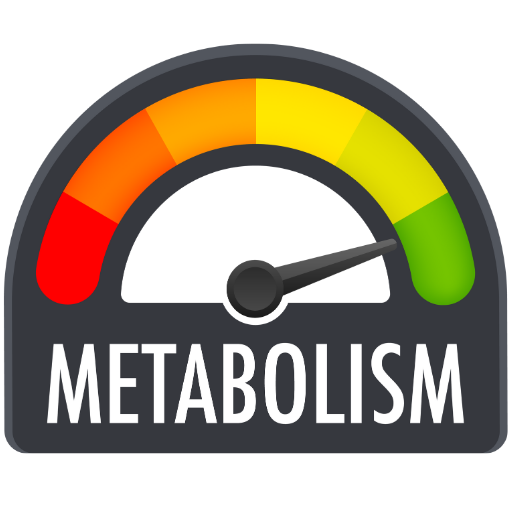About Temperature Calculator
How Temperature is Measured?
Temperature is a fundamental physical quantity that indicates the degree of heat present in a substance or environment. It is measured using various instruments, the most common being thermometers. These devices can take several forms, such as liquid-in-glass thermometers, digital thermometers, and infrared thermometers, each suited for different applications. The measurement typically involves the expansion of liquids, electrical resistance, or infrared radiation, depending on the type of thermometer used. The result is usually reported in one of several temperature scales.
What is Celsius Temperature Scale?
The Celsius scale, also known as centigrade, is one of the most widely used temperature scales. It is based on the freezing and boiling points of water, which are defined as 0 degrees Celsius (°C) and 100 degrees Celsius (°C) respectively at standard atmospheric pressure. The scale is linear, meaning that a change of 1 °C is equivalent to a change of 1 Kelvin. The Celsius scale is commonly used in most countries around the world for everyday temperature measurements, such as weather reports and cooking.
What is Fahrenheit Temperature Scale?
The Fahrenheit scale is primarily used in the United States and a few Caribbean nations. It was developed by Daniel Gabriel Fahrenheit in the early 18th century. On this scale, the freezing point of water is set at 32 degrees Fahrenheit (°F) and the boiling point at 212 degrees Fahrenheit (°F) under standard atmospheric conditions. The Fahrenheit scale divides the temperature range between these two points into 180 equal parts. This scale is often considered less intuitive than Celsius, but it remains popular in specific regions, particularly for weather forecasting and household applications.
What is Kelvin Temperature Scale?
The Kelvin scale is the standard unit of temperature measurement in the physical sciences. Named after the physicist William Thomson, Lord Kelvin, this scale begins at absolute zero, the theoretical point where all molecular motion ceases, which is 0 Kelvin (K). The Kelvin scale has the same incremental value as the Celsius scale, where a change of 1 K is equivalent to a change of 1 °C. The Kelvin scale is crucial in scientific contexts, as it provides a universal reference point for temperature measurements, especially in thermodynamics and physics.
How to Convert Between Celsius, Fahrenheit, and Kelvin
Temperature conversions are essential for science, cooking, weather reports, and everyday use. In this guide, we’ll explain simple formulas for converting between Celsius, Fahrenheit, and Kelvin, allowing you to switch between these temperature scales with ease.
Before diving into the conversions, let’s briefly explain the three scales:
- Celsius (°C): Commonly used worldwide, especially in scientific contexts, Celsius defines the freezing point of water at 0°C and the boiling point at 100°C.
- Fahrenheit (°F): Mainly used in the United States, Fahrenheit sets water's freezing point at 32°F and its boiling point at 212°F.
- Kelvin (K): Primarily used in scientific calculations, the Kelvin scale starts at absolute zero, making it ideal for measuring extreme temperatures.
1. Converting Celsius to Fahrenheit
To convert Celsius (°C) to Fahrenheit (°F), use this formula:
\[ °F = (°C \times \frac{9}{5}) + 32 \]
Example Calculation:
If the temperature is 25°C:
\[ °F = (25 \times \frac{9}{5}) + 32 = 77°F \]
2. Converting Fahrenheit to Celsius
If you want to go from Fahrenheit (°F) to Celsius (°C), apply this formula:
\[ °C = (°F - 32) \times \frac{5}{9} \]
Example Calculation:
For a temperature of 77°F:
\[ °C = (77 - 32) \times \frac{5}{9} = 25°C \]
3. Converting Celsius to Kelvin
Switching from Celsius (°C) to Kelvin (K) is straightforward:
\[ K = °C + 273.15 \]
Example Calculation:
For 25°C:
\[ K = 25 + 273.15 = 298.15K \]
4. Converting Kelvin to Celsius
To go from Kelvin (K) to Celsius (°C), subtract 273.15 from the Kelvin value:
\[ °C = K - 273.15 \]
Example Calculation:
If the temperature is 298.15K:
\[ °C = 298.15 - 273.15 = 25°C \]
5. Converting Fahrenheit to Kelvin
When converting Fahrenheit (°F) to Kelvin (K), use the following formula:
\[ K = (°F - 32) \times \frac{5}{9} + 273.15 \]
Example Calculation:
If the temperature is 77°F:
\[ K = (77 - 32) \times \frac{5}{9} + 273.15 = 298.15K \]
6. Converting Kelvin to Fahrenheit
To convert from Kelvin (K) to Fahrenheit (°F), apply this formula:
\[ °F = (K - 273.15) \times \frac{9}{5} + 32 \]
Example Calculation:
If the temperature is 298.15K:
\[ °F = (298.15 - 273.15) \times \frac{9}{5} + 32 = 77°F \]
Quick Reference Table
Here’s a summary table for a quick look at the temperature conversions:
| Conversion Type | Formula |
|---|---|
| Celsius to Fahrenheit | \( °F = (°C \times \frac{9}{5}) + 32 \) |
| Fahrenheit to Celsius | \( °C = (°F - 32) \times \frac{5}{9} \) |
| Celsius to Kelvin | \( K = °C + 273.15 \) |
| Kelvin to Celsius | \( °C = K - 273.15 \) |
| Fahrenheit to Kelvin | \( K = (°F - 32) \times \frac{5}{9} + 273.15 \) |
| Kelvin to Fahrenheit | \( °F = (K - 273.15) \times \frac{9}{5} + 32 \) |
Tips for Accurate Temperature Conversions
- Use Precise Values: For scientific purposes, use values with decimals, such as 273.15 for conversions with Kelvin, to improve accuracy.
- Check Units: Always verify that you’re converting from the correct scale to avoid errors.
- Use a Calculator for Complex Conversions: While basic conversions may be simple, using a calculator can ensure accuracy.
What is the Difference Between Fahrenheit, Celsius, and Kelvin?
The main differences between the Fahrenheit, Celsius, and Kelvin scales lie in their reference points and increments.
-
Reference Points:
- Celsius is based on the properties of water, with 0 °C as the freezing point and 100 °C as the boiling point.
- Fahrenheit has its own specific reference points, with 32 °F for freezing and 212 °F for boiling.
- Kelvin begins at absolute zero (0 K), with no negative values, and is commonly used in scientific contexts.
-
Increments:
- The Celsius and Kelvin scales have a direct relationship, where a 1-degree change in Celsius corresponds to a 1 Kelvin change.
- In contrast, a 1-degree change in Fahrenheit is equivalent to 1/180 of the change between the freezing and boiling points of water, making it less straightforward.
Understanding these differences is essential for converting between scales and grasping temperature concepts in various scientific and everyday applications.






















